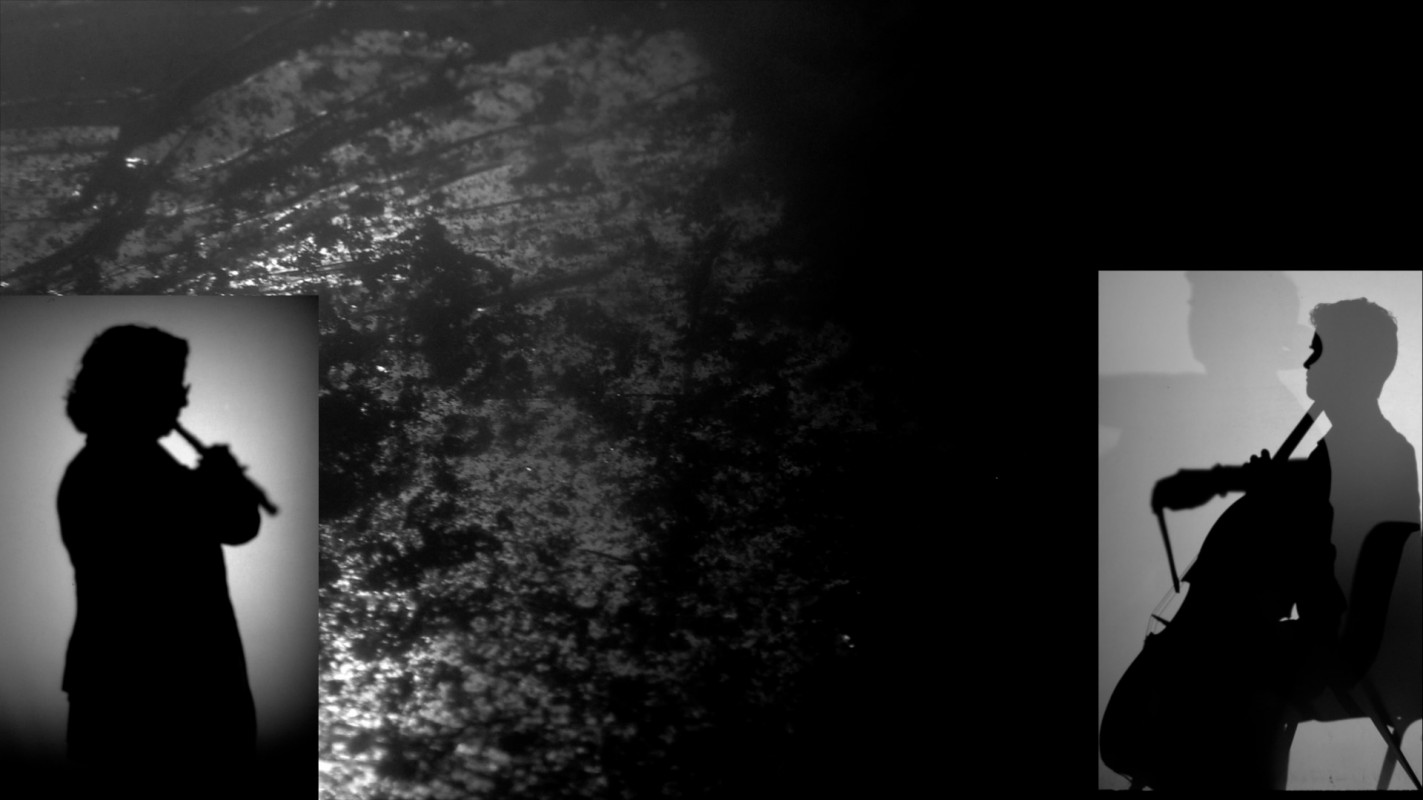Sound and light: March 17 faculty performance combines cinema and music
‘The Light We Hear’ features seven challenging contemporary compositions and original, projected imagery

Music and image are both borne upon unseen waves that transmit meaning to the ear and eye. By manipulating both, performers invite the audience into a new way of experiencing that can estrange and deepen their understanding of the world.
The projection performance “The Light That We Hear” will explore these intersections of sound and image; the show begins at 3 p.m. March 17 in the Anderson Center of the Performing Arts Chamber Hall.
Faculty performers include flutist Jeanne Sperber, pianist Michael Salmirs and cellist Zachary Sweet, all lecturers in the Music Department. During the performance, Associate Professor of Cinema Monteith McCollum will combine original visuals that respond in real time to the music as the musicians perform a range of compositions with themes centering on light, water, and social and environmental justice.
The performance takes its name from a composition written by Jennifer Higdon, one of seven challenging pieces that will be performed during the event.
“One of the threads that we’re working with is light and the refraction of light. Part of the imagery that I’ve filmed has been through prisms and debris within fish tanks, while also considering new ways to illuminate and create movement in the water,” McCollum said.
Video sequences will move between multiple screens from paper, cloth and mirrors, connecting with the performers. Images range from simple light refractions to video feedback, animated constructions from vintage magazines, organic debris from a pond, and the mirror projections themselves, McCollum explained.
Some of the images within the performance also derive from the performers and instruments. The visuals respond to the music, with effects triggered manually by McCollum or shifts in volume from the performers.
The modern works chosen for flute, cello and piano pose interesting technical challenges. Written in 1971, George Crumb’s “Vox Balaenae (Voice of the Whale)” was inspired by one of the first recordings of humpback whale songs. It is the show’s longest piece and the only one written by a performer no longer living.
“The techniques the pianist has to employ involve a chisel, a paperclip and a glass rod on the strings inside the piano, and I have to sing and play at the same time while the cellist is using harmonics,” Sperber said. “It’s using these instruments to the limit.”
“Homeland” was written by Allison Loggins-Hull after Hurricane Maria devastated Puerto Rico and reflects the difficulties of patriotism among populations that feel unwanted, Sperber explained. The piece opens with the flute’s timbral trills, representing troubled waters, and then transitions into anxious and distorted passages, including a disguised version of the national anthem.
Also by Loggins-Hull, the cello piece “Stolen” consists of three short movements exploring the journey of a young girl sold into marriage, while Rhonda Larson’s “The Way of the River” is a meditation on the moods of water and surrendering the self to a force larger than your own understanding.
“Radiant Pillars” by music lecturer Martin Hebel is an abstract reflection on two scientific observations that have expanded our understanding of the universe: the Hubble telescope image of the “Pillars of Creation,” which shows stars forming from clouds of gas and dust, and the cosmic microwave background, a remnant of the Big Bang. Finally, Arvo Pärt’s “Spiegel im Spiegel” draws on the mirror theme — the title means “mirror in the mirror” — and may sound familiar to the listener; it has been featured in films, ballet and the stage.
Planning for the project began during the depths of the pandemic, Sperber said. Initially, their motivation was to bring contemporary works focused on social justice and the environment to the stage, incorporating music and video projection. As the project developed, the themes of light and water emerged and intertwined with these larger ideas.
Cinema Professor Ariana Gerstein provided artistic and technical help, as well as insight; she also contributed her own time and images for the composition “Stolen.” Undergraduate Santiago Parra is helping stage the production, etch mirrors, assist in video shoots, and work with McCollum during the live performance. McCollum and the performers also credit the Anderson Center’s Dan Sonnen, James Byron and Marnie Wrighter for their help with the technical aspects and scheduling, as well as Hank Rudolph and Brian Murphy from the Cinema Department for equipment support.
“There have been a lot of concerts where there are images projected behind the performers; this is nothing like that,” McCollum said. “This is all original material.”
